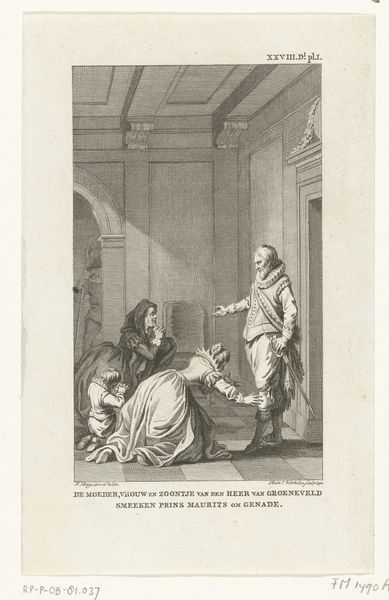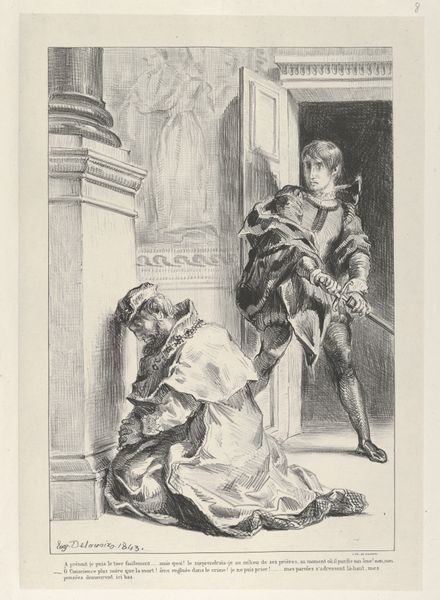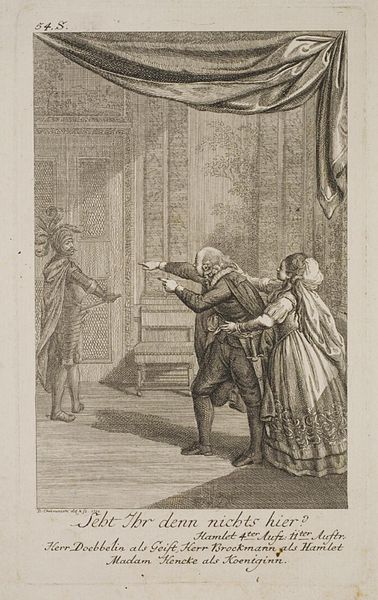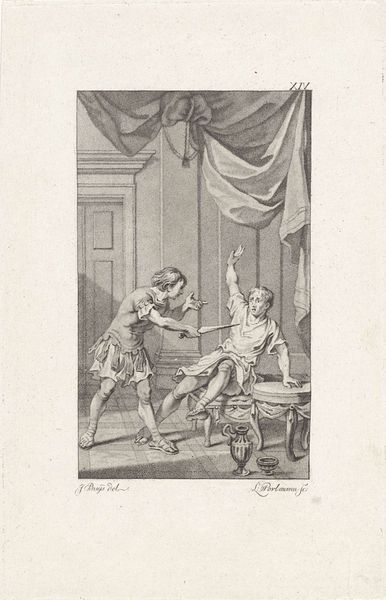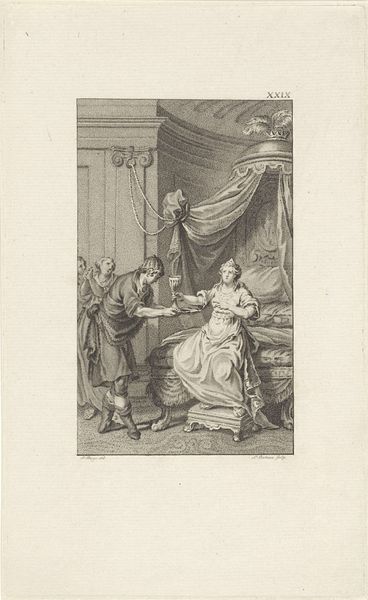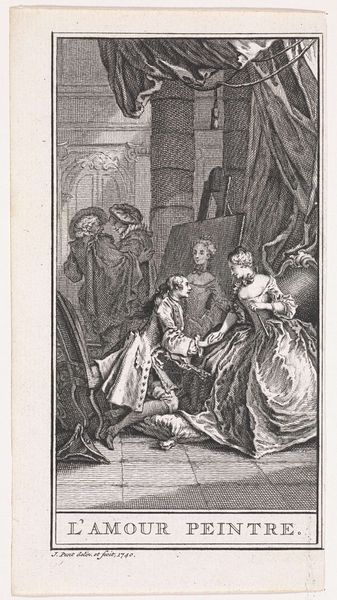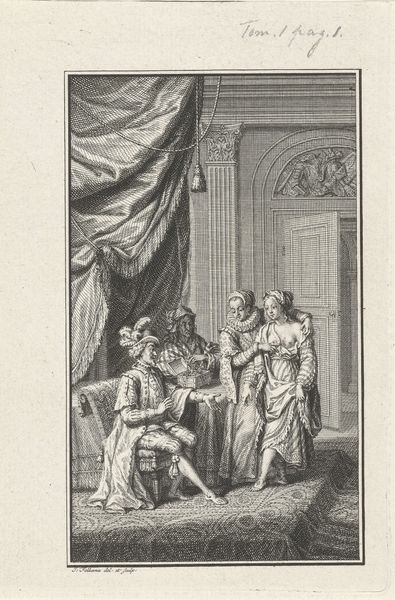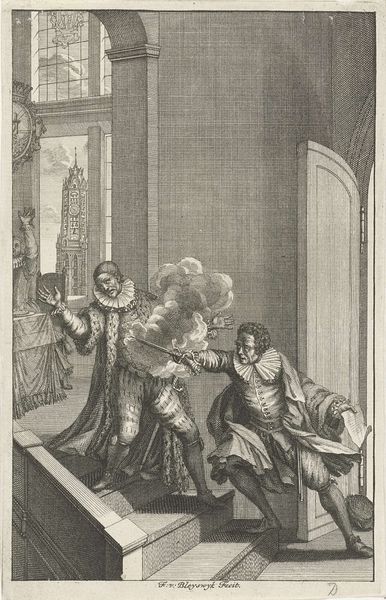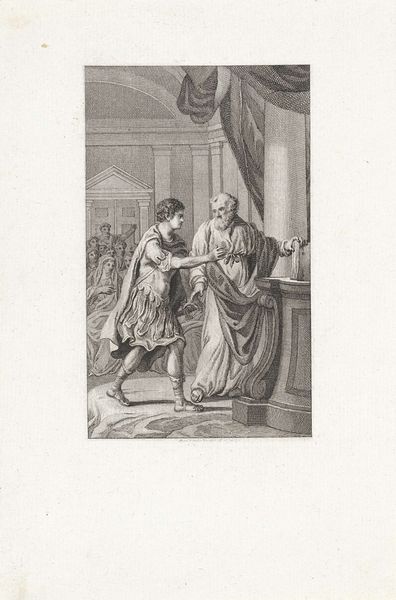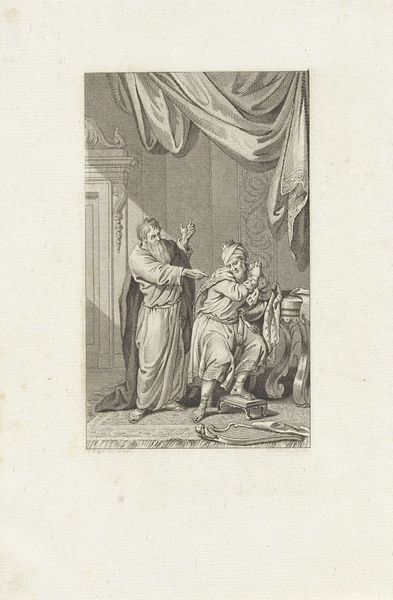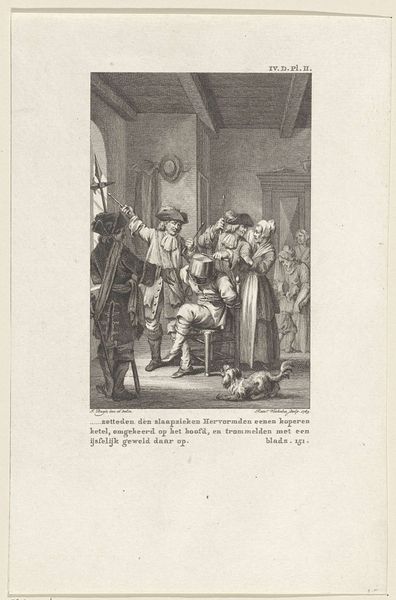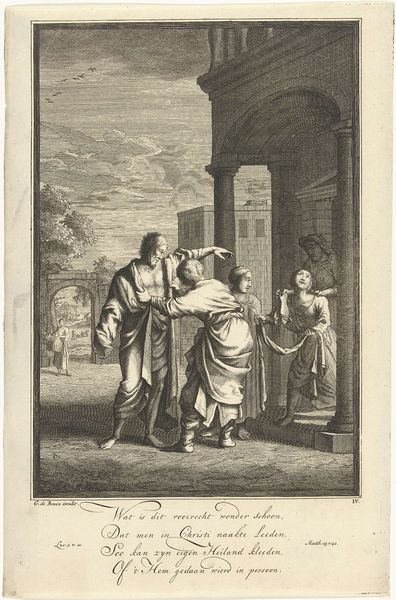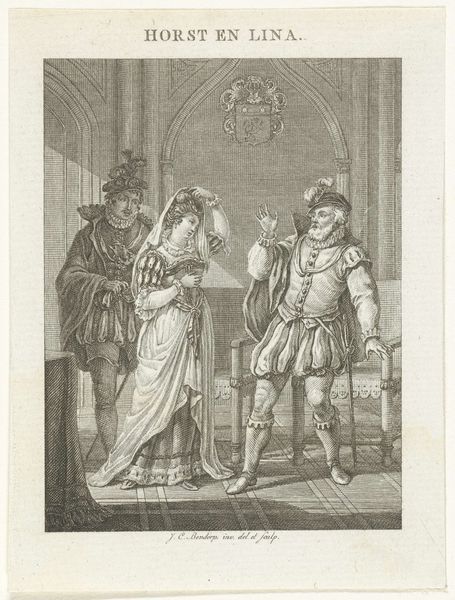
print, engraving
#
narrative-art
#
dutch-golden-age
# print
#
old engraving style
#
figuration
#
genre-painting
#
engraving
Dimensions: width 197 mm, height 293 mm
Copyright: Rijks Museum: Open Domain
Curator: I'm immediately struck by the stark contrasts in this engraving. The sharp lines, the textures created solely through hatching—it gives everything such a tactile quality, despite its flatness. Editor: This is "Man offers a woman a coin," a print dating from the 17th or early 18th century, attributed to Salomon Savery. Considering the probable period, and the theme apparent from its title, how do you feel this piece resonates with modern feminist perspectives? Curator: The composition directs us. The way the figures are positioned, with the man towering over the seated woman, immediately brings up power dynamics. The act of offering a coin isn't neutral; it implies dependency and potentially transactional relationships, even exploitation. Editor: I agree it's unsettling. Yet, observe how the light falls predominantly on the woman, especially her face and ruffled collar, drawing the viewer's eye. Is that mere artistic choice, or does it signify something deeper about her role in this transaction? And, to follow, what of the contrasting, darker clothing, with only light features accentuating the man and his action? Curator: It's tempting to read her highlighted features as defiance or a quiet resistance. Her direct gaze doesn’t suggest subservience. It seems a carefully calculated contrast: an assertion of agency within restrictive social structures. Editor: Semiotically, we can deconstruct the coin as the signifier and financial dependence as the signified. Yet that is an era with rules now being transgressed—where and what is the site of meaning within its aesthetic economy? I want to say that it looks quite intentional—as much so in the artist as it may be for her! Curator: That interpretation invites discourse about class and gender within the art world during that period—the limited access for women artists, their dependence on male patronage... How do the artistic constraints of the time shape the narrative itself? Editor: Well, I do find this conversation very stimulating! The structural framework provides such avenues to pursue both thought and critical re-evaluation of historical constructs! Curator: Agreed! Hopefully it also gives our listeners some ideas.
Comments
No comments
Be the first to comment and join the conversation on the ultimate creative platform.
